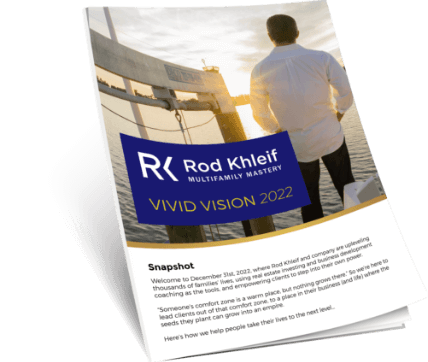Financing Your Deal: Understanding the Capital Stack
Financing a deal can be tough. As an investor, you’ve got to contend with deadlines, competing priorities, investors, and sellers who are all dependent upon your ability to get the deal done. Adding to the confusion is the availability of a variety of financing sources, each with their own requirements, that can be utilized to get the deal over the line.
Collectively, these sources are known as the “Capital Stack” and each component may play a role in the financing of a multifamily real estate transaction.
Note: Real Estate and Multifamily are specialized subjects that contain technical terms. To assist in the understanding of the subject matter contained in this article, we’ve provided a glossary of key terms (in bold) at the end.
“Collectively, these sources are known as the “Capital Stack” and each component may play a role in the financing of a multifamily real estate transaction.”
Capital Stack – Defined
The Capital Stack is the organization of capital used to finance a real estate transaction. More importantly, the agreements for each component of the stack define who has the rights, and in what order, to the cash flow and profits generated by the asset throughout the investor’s holding period and upon sale. For most deals, there are 4 common components in the Capital Stack, which is illustrated in the diagram to the right:
- Senior Debt
- Mezzanine Debt
- Preferred Equity
- Common Equity
Let’s discuss each one in more detail.

Senior Debt
Senior debt is most commonly associated with a bank loan and it’s often the primary source of capital in the capital stack. It usually makes up the largest portion of the financing, usually 65% – 75% of the purchase price, and the holder is first in line to receive periodic debt service payments.
It’s considered the least risky component of the capital stack and, as a result, usually provides the lowest return. In exchange for accepting a lower interest rate, the senior debt holder is entitled to a first position lien on the property, which gives them the ability (and right) to initiate the foreclosure/liquidation process in the event of a default. Once the property is sold, they’re also the first to be repaid.
Mezzanine Debt
On occasion, there may be a gap between a property’s maximum supportable loan amount and purchase price that isn’t filled by the equity raise. In these instances, the borrower may opt to seek mezzanine debt to plug the hole and close the deal.
Mezzanine debt is a loan, not secured by the property, but by a pledge of the ownership interest in the purchasing entity. Mezzanine debt holders are second in line for periodic debt service payments and typically enjoy a slightly higher return than senior debt holders to compensate for the elevated risk.
Because the Mezzanine Debt holders don’t have a claim on the underlying property, their ability to initiate the foreclosure process is limited and often only in agreement with the senior debt holders. Upon sale and/or liquidation, they are second in line to be repaid.
Preferred Equity
Preferred Equity isn’t a loan, but an investment in the ownership entity. Preferred equity holders sit below debt holders, but above Common Equity holders in the Capital Stack. As such, they require higher returns than debt holders and profit participation upon sale (if available).
However, in the event of a foreclosure and the resulting liquidation, Preferred Equity holders are third in line to be repaid and may only receive a fraction of their initial investment back, if anything.
Common Equity
The last component of the Capital Stack is the Common Equity holders, who also have an equity interest in the ownership entity, but sit behind the Preferred Equity holders. As such, their position is the riskiest and they require the highest returns. But, they also benefit the most from a profitable sale.
In the event of a foreclosure and the resulting liquidation, the Common Equity holder is the last to be repaid.
Capital Stack – A Bankruptcy Example
Generally speaking, when the underlying property is performing as expected and each member of the capital stack is receiving their respective payments, everyone’s happy. However, if the property performs poorly and falls into bankruptcy/foreclosure, the details regarding the rights of each position in the capital stack are critical. To illustrate this concept, consider this example.

An investor finds a multifamily property, does their research, and makes an offer to purchase it for $3MM. The property supports a loan amount of $1.8MM (Senior Debt), which means the investor needs to find $1.2MM to close the deal.After calling their investors, they’re able to secure $800k in Common Equity and $200k in Preferred Equity. To round out the Capital Stack, they obtain the remaining $200k needed in the form of Mezzanine Debt. See the diagram to the left for a depiction of the resulting Capital Stack.
Now, let’s assume that, after two years of underperformance, the senior debt holder has foreclosed on the property and liquidated it for a sale price of $2MM, which results in a $1MM loss. The order of the capital stack determines who has to absorb said loss.
With a sale price of $2MM, the Senior Debt holder is repaid first, and in full, leaving $200k in sale proceeds remaining. Because the Mezzanine Debt holder is in second position and they are owed $200k, they’ll absorb the entirety of the remaining proceeds. The Preferred and Common Equity holders will be left with nothing and their entire investment will be lost.
“Whether you’re investing in a deal led by someone else or leading one on your own, it’s critically important to be aware of the construction of the capital stack and who’s entitled to what.”
NOTE: The scenario doesn’t account for interest that may accrue on the loan. It’s intended to demonstrate the order of repayment in a bankruptcy scenario. Depending on the state in which the bankruptcy was filed, accrued interest may affect the repayment amount for each position in the capital stack. In addition, the actual repayment terms and rights may differ slightly.
Summary and Conclusion
Whether you’re investing in a deal led by someone else or leading one on your own, it’s critically important to be aware of the construction of the capital stack and who’s entitled to what.
In addition, it’s imperative to understand exactly where your investment falls in the stack and to be compensated appropriately for the level of risk taken. It may make the difference between getting something and getting nothing in the event of a bankruptcy.
Glossary of Key Terms
Capital Stack: The organization of capital used to finance a real estate transaction. It defines who has the rights, and in what order, to the cash flow and profits generated by the property throughout the holding period and upon sale.
Holding Period: An investor’s holding period is defined as the amount of time for which they plan to hold an investment. It’s usually expressed in either months or years.
Senior Debt: Senior debt is most commonly associated with a bank loan and it’s the base or foundation of the capital stack. It usually makes up the largest portion of the financing, often 65% – 75% of the purchase price and the holder is first in line to receive periodic debt service payments.
Mezzanine Debt: Mezzanine debt is a loan, not secured by the property, but by a pledge of the ownership interest (common equity shareholder). Mezzanine debt holders are second in line for periodic debt service payments and typically enjoy a slightly higher return than senior debt holders to compensate for the elevated risk.
Preferred Equity: Preferred Equity isn’t a loan, but an investment in the ownership entity of the property. Preferred equity holders sit below debt holders, but above Common Equity holders. As such, they require higher returns and participate in the profits upon sale.
Common Equity: Common Equity represents an interest in the ownership entity, but they sit behind the preferred equity holders. As such, they require the highest returns of anyone in the Capital Stack and typically stand to benefit the most from a profitable project.
Interest Rate: The percentage of a loan’s principal balance charged by the lender for the use of it’s money.
Lien: A right to keep possession of property belonging to another person until a debt owed by that person is paid.
Foreclosure: The action of taking possession of a mortgaged property when the mortgagor fails to keep up their loan payments.
Default: Failure to fulfill an obligation, especially to repay a loan. The conditions of a default are defined in the Loan Agreement.









